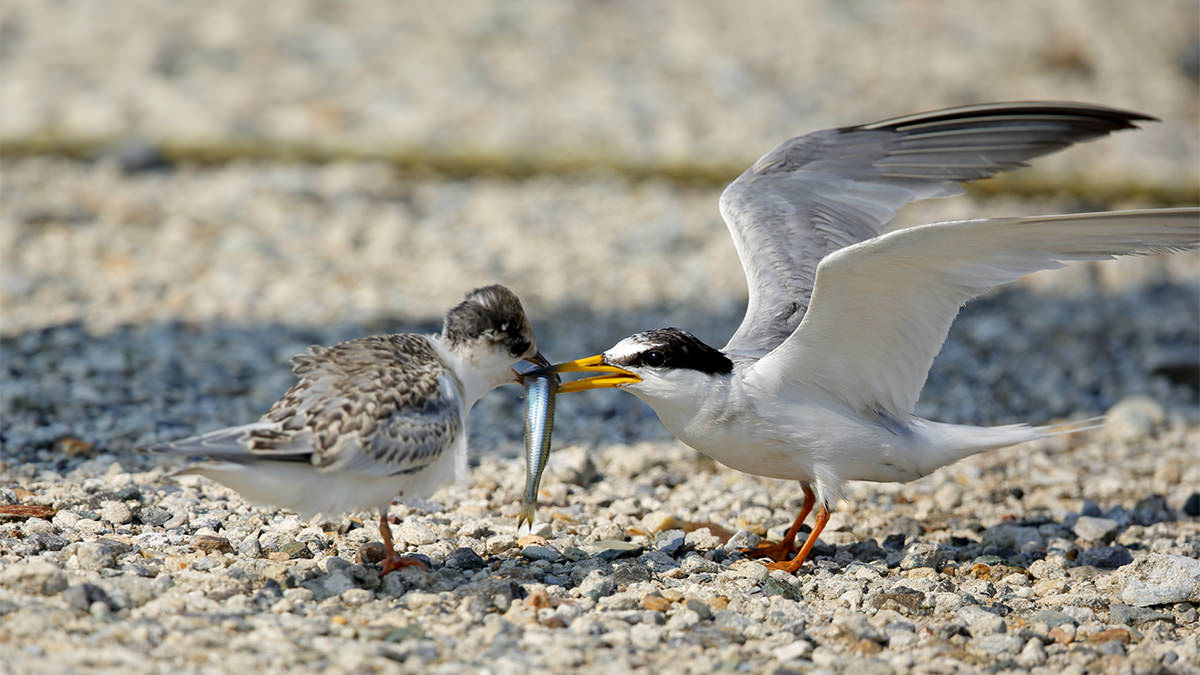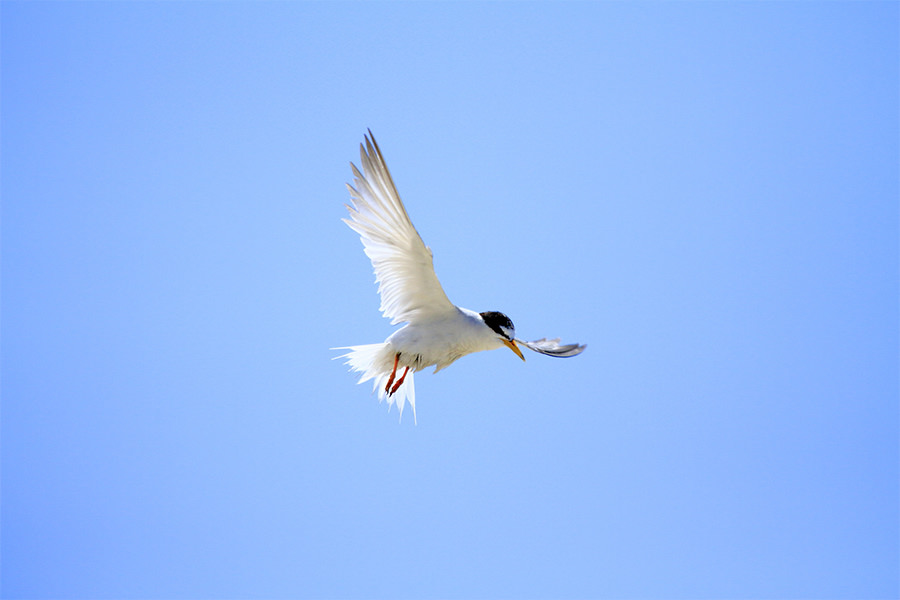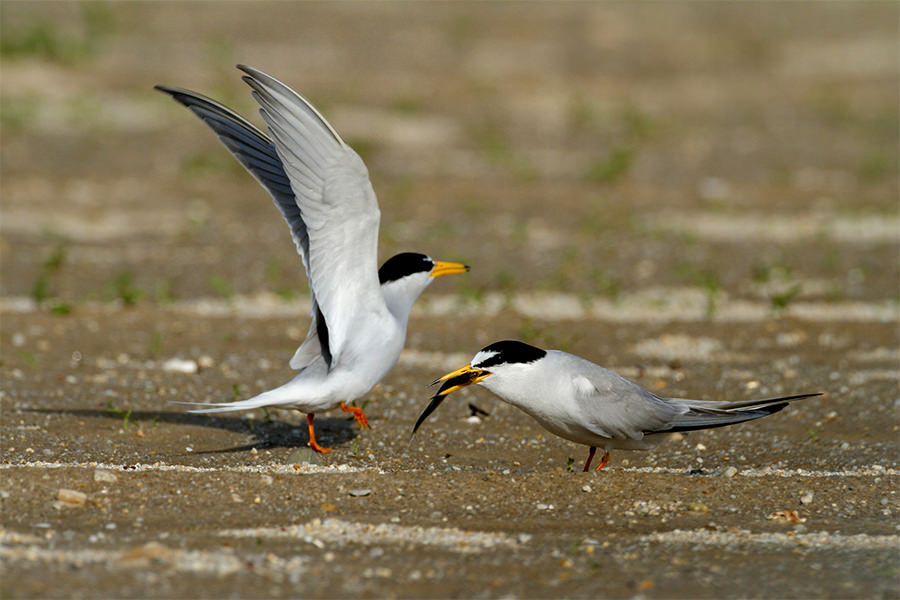An endangered species that breeds on decreasing bare land
It needs bare land without greenery
The Little Tern has been designated a vulnerable species by Japan's Ministry of the Environment. The decrease in breeding habitat is likely one of the concerns. Some waders like the Kentish Plover or Little Tern breed in open ground where there is no vegetation. This kind of breeding habitat will sometimes be created after a flood, however it is an unstable environment that could be flooded again or fill in with grass.
Even if reclaimed land becomes a breeding site for a temporary period of time, roads or buildings are soon constructed. We tend to think that having greenery is better for birds or the environment but that is not necessarily so. From a biodiversity conservation standpoint as well we should keep in mind that there are some bird species like the Little Tern that need bare land for breeding, and that even just removing weeds is serious work in maintaining bare land artificially.
Reason for breeding in colonies
There is an NPO called Little Tern Project that continues to protect the Little Tern with an artificial breeding site on the roof of a water reclamation center in Tokyo.
Even though they are breeding, if their colony is small, it is not unusual for their eggs or chicks to become a target for predators, including scavenging crows or raptors such as the Common Kestrel. Building a nest on the ground should also put them in danger from cats and dogs, but their habit of breeding in colonies on bare land with a vantage point likely has something to do with avoiding risk through security in numbers and collective defense.
A Little Tern in flight looks like a whitish swallow with its long, thin wings and forked tail
In this courtship scene, the male offers the female a small fish as a present


